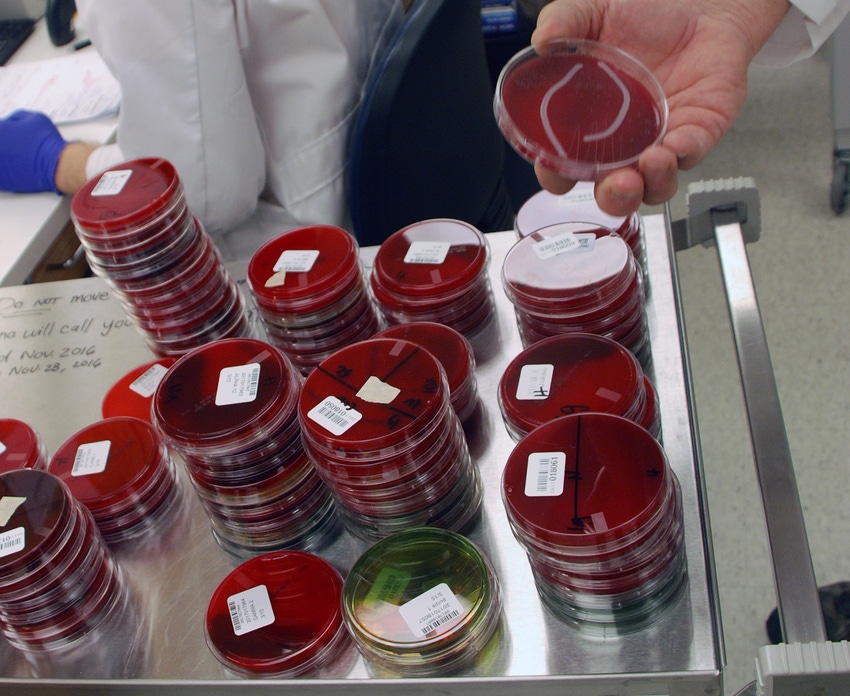Collaborative diagnostic lab reports offer broad swine disease picture
UPDATED: Aggregated results allow producers and veterinarians to compare their own dataset with the aggregated results for benchmarking purposes.
May 7, 2019

By Giovani Trevisan and Daniel Linhares, Iowa State University
Producers and veterinarians are constantly submitting samples to veterinary diagnostic laboratories for routine testing to investigate agent circulation. Individual case results are reported back to VDL clientele. Aggregated results summarizing the frequency of detection of swine pathogens and disease by VDLs have been intermittently provided to the industry, usually summarized in different formats including peer-reviewed publications, professional organization presentations and proceedings, lay-journal communications and VDL summaries. Until recently there was no single source available where results from routinely tested samples and test results from swine samples submitted for testing at different U.S. swine VDLs were summarized and routinely reported in an anonymized format.
A one and half-year-old collaborative project, funded by the Swine Health Information Center, named the Swine Disease Reporting System has been reporting current and historical VDL, anonymized, information from routinely tested samples at four major U.S. swine VDLs: Iowa State University Veterinary Diagnostic Laboratory, University of Minnesota Veterinary Diagnostic Laboratory, South Dakota State University Animal Disease Research & Diagnostic Laboratory and Kansas State University Veterinary Diagnostic Laboratory. These four VDLs represent more than 95% of all porcine cases tested in the United States.
The first analysis utilized the results of polymerase chain reaction testing for porcine reproductive and respiratory syndrome virus, porcine epidemic diarrhea virus, porcine deltacoronavirus, transmissible gastroenteritis virus and mycoplasma hyopneumoniae. Statistical models with the ability to weekly detect significant changes in the pattern of agent detection were developed and applied to the data. Additionally, from ISU-VDL PRRSV restriction fragment length polymorphism information, and disease detection on swine respiratory and enteric tissue have been reported. A group composed of 10 veterinarians, producers and diagnosticians have been providing insights for the major monthly findings.
All together until May 1, available information for the five agents aggregated from the four VDLs represented 792,898 distinct cases retrieved and analyzed. Historical data indicate that the number of PRRSV cases tested doubled from 33,075 cases in 2009 to 67,039 cases in 2018. PRRSV Type 2, also known as North America, was more frequently detected in Iowa, whereas the PRRSV Type 1, also known as European, was more frequently detected in North Carolina. Observed increased detection of the percentage of positive results in wean-to-market age category precedes the increased detection in adult/sow farm age category during the second half of the year. Clear seasonal cyclic pattern of agent detection was identified for PRRSV, PED, PDCoV and MHP.
PRRSV, PEDV and PDCoV had the highest percentage of positive cases results during winter and spring months and the lowest during summer and fall months. MHP had the highest percentage of positive cases during fall and winter months and the lowest during spring and summer months. Detection of TGE was close to zero after the introduction of PEDV and PDCoV in the United States during 2013-14.
Data visualization dashboards, analytical tools and monthly report podcasts can be accessed online, with ability to apply dynamic filters allowing to display the information over time, age category, specimen, tissue presence and site state. Monthly reports with the most relevant finds are published at the SHIC webpage under the domestic disease surveillance reports.
The SDRS was developed to inform the U.S. swine industry on historical key macro-epidemiological aspects of agent detection, and to have the capability to be updated on a real-time basis to keep informing agent detection on a proactive manner. The anonymized information presented in this project does not contain confidential information such as client, veterinarian, owner, producer, specific location or any other specific identifier of individual VDL clients.
The aggregated results allow producers and veterinarians to compare their own dataset with the aggregated results for benchmarking purposes. Models applied to the database are capable to generate outbreak signals and inform producers when agent detection exceeds the expected values. There is a great number of reports where veterinarians have taken advantage of the information presented in the SDRS project to support and better advise producers for a decision on disease detection, prevention and control strategies.
Sources: Giovani Trevisan and Daniel Linhares, Iowa State University, who are solely responsible for the information provided, and wholly owns the information. Informa Business Media and all its subsidiaries are not responsible for any of the content contained in this information asset.
You May Also Like



